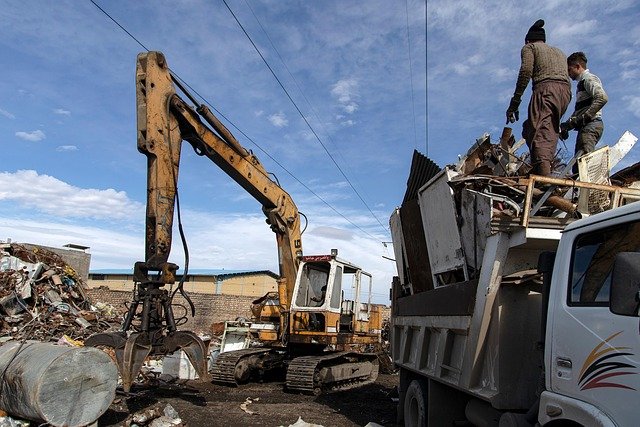Mobile Homes and Trailers: Understanding Dumpster Trailers
Dumpster trailers are versatile tools used in construction, waste management, and various industries for hauling and disposing of materials. These specialized trailers combine the functionality of a dumpster with the mobility of a trailer, offering efficient solutions for waste removal and material transport. This article explores the various aspects of dumpster trailers, including their types, sizes, features, maintenance, and selection criteria.

What are the common types of dumpster trailers and their uses?
Dumpster trailers come in several types, each designed for specific applications:
-
Roll-off dumpster trailers: These are commonly used for construction debris, large-scale cleanouts, and industrial waste. They feature a roll-off mechanism that allows the container to be easily loaded and unloaded from the trailer.
-
Dump trailers: Often used in landscaping, construction, and agriculture, dump trailers have hydraulic systems that enable the bed to be tilted for easy unloading of materials.
-
Gooseneck dumpster trailers: These trailers offer increased stability and towing capacity, making them suitable for heavy-duty applications and long-distance hauling.
-
Flatbed dumpster trailers: Versatile options that can be used for various materials, including bulky items that may not fit in enclosed trailers.
Each type of dumpster trailer serves specific needs, from residential cleanouts to large-scale industrial waste management projects.
What are the typical sizes and load capacities available for dumpster trailers?
Dumpster trailers come in a range of sizes to accommodate different load requirements:
-
Small trailers: Typically 5 to 10 cubic yards, suitable for residential use or small projects.
-
Medium-sized trailers: Range from 12 to 20 cubic yards, often used for medium-scale construction or renovation projects.
-
Large trailers: Can exceed 30 cubic yards, designed for industrial applications or large-scale waste removal.
Load capacities vary based on the trailer size and design, ranging from 2,000 pounds for smaller models to over 20,000 pounds for heavy-duty options. It’s crucial to consider both volume and weight capacity when selecting a dumpster trailer to ensure it meets specific project requirements and complies with local transportation regulations.
What key features are designed for hauling and dumping in these trailers?
Dumpster trailers incorporate several features to enhance their hauling and dumping capabilities:
-
Hydraulic systems: Enable easy tilting of the bed for efficient unloading of materials.
-
Reinforced frames: Provide structural integrity to support heavy loads during transport and dumping.
-
Tailgates: Often featuring dual-swing or barn-door designs for versatile access and unloading options.
-
Tie-down points: Allow for secure fastening of loads during transit.
-
Adjustable hitches: Accommodate various towing vehicles and improve maneuverability.
-
Safety features: Include items like breakaway systems, hydraulic locks, and lighting for enhanced operational safety.
These features collectively contribute to the efficiency, safety, and functionality of dumpster trailers across different applications.
What maintenance practices can extend the life of a dumpster trailer?
Proper maintenance is crucial for extending the lifespan and ensuring the reliability of dumpster trailers:
-
Regular inspections: Check for wear, damage, or loose components before and after each use.
-
Lubrication: Keep moving parts, such as hinges, hydraulic systems, and wheels, well-lubricated to prevent rust and ensure smooth operation.
-
Cleaning: Regularly clean the trailer, especially after hauling corrosive or abrasive materials, to prevent damage to the trailer’s surface and components.
-
Tire maintenance: Check tire pressure, tread depth, and overall condition to ensure safe towing and prevent blowouts.
-
Hydraulic system maintenance: Regularly inspect hydraulic fluid levels and replace as needed to maintain optimal performance.
-
Paint and coating care: Touch up paint chips or scratches to prevent rust and maintain the trailer’s appearance and structural integrity.
-
Electrical system checks: Ensure all lights and electrical connections are functioning properly for safe operation on roads.
By adhering to these maintenance practices, owners can significantly extend the operational life of their dumpster trailers and minimize downtime due to repairs.
What are some practical tips for choosing the right dumpster trailer?
Selecting the appropriate dumpster trailer involves considering several factors:
-
Assess your needs: Determine the typical load size, type of materials to be hauled, and frequency of use to guide your selection.
-
Consider towing capacity: Ensure your towing vehicle can safely handle the weight of the trailer and its maximum load.
-
Evaluate dumping mechanisms: Choose between hydraulic, manual, or other dumping systems based on your operational requirements and budget.
-
Check local regulations: Verify that the trailer complies with local transportation and waste management regulations.
-
Analyze build quality: Look for trailers constructed with durable materials and quality craftsmanship to ensure longevity.
-
Compare features: Evaluate additional features like tarp systems, side extensions, or specialized liners that may enhance functionality for your specific needs.
-
Consider future needs: If possible, opt for a slightly larger or more versatile trailer to accommodate potential future requirements.
-
Review warranty and support: Choose trailers from reputable manufacturers offering solid warranty coverage and customer support.
By carefully considering these factors, buyers can select a dumpster trailer that best meets their operational needs while providing long-term value and reliability.
In conclusion, dumpster trailers are essential tools in various industries, offering efficient solutions for waste management and material transport. Understanding the types, sizes, features, maintenance requirements, and selection criteria for these trailers can help users make informed decisions and maximize the utility of these versatile equipment pieces.




